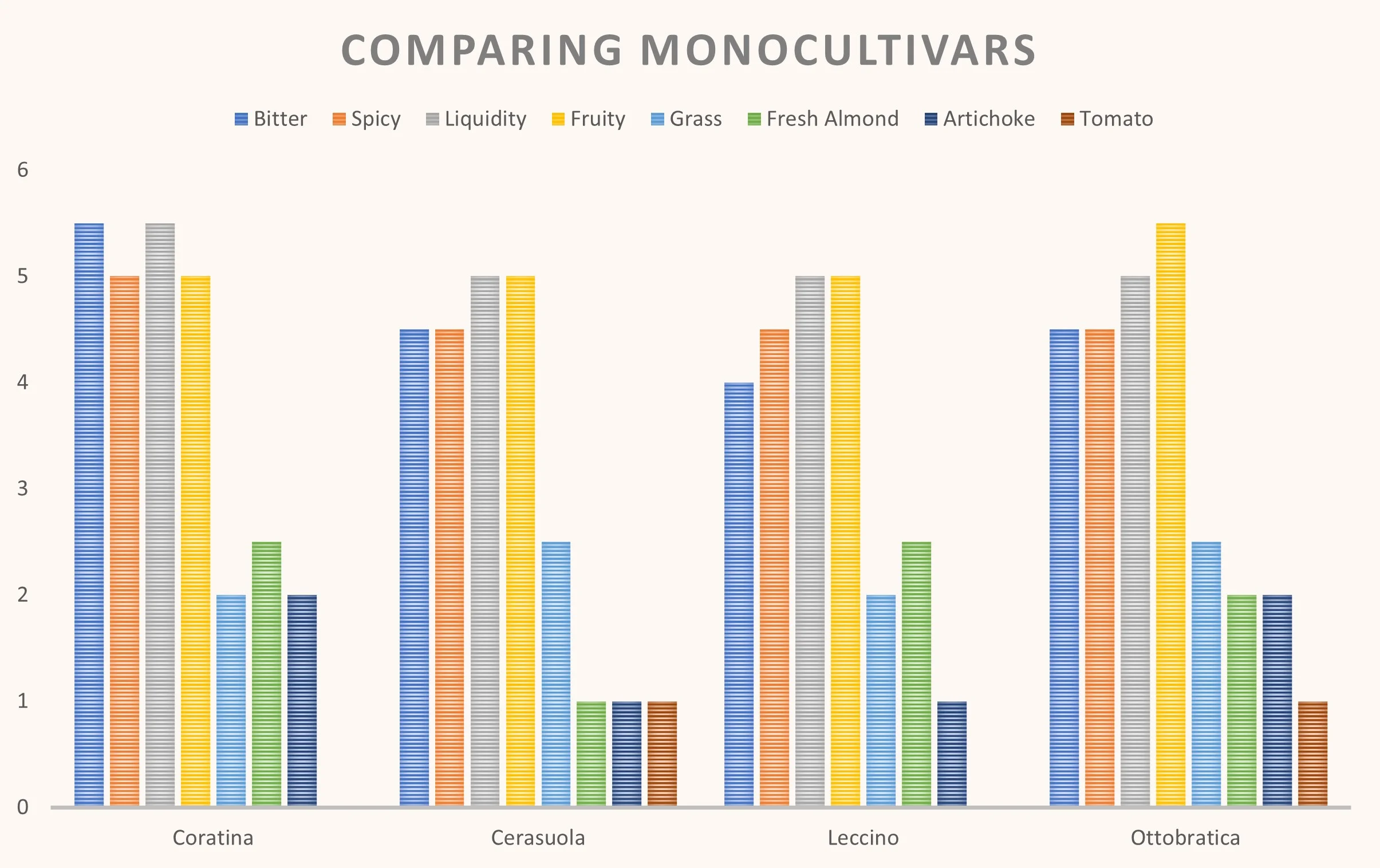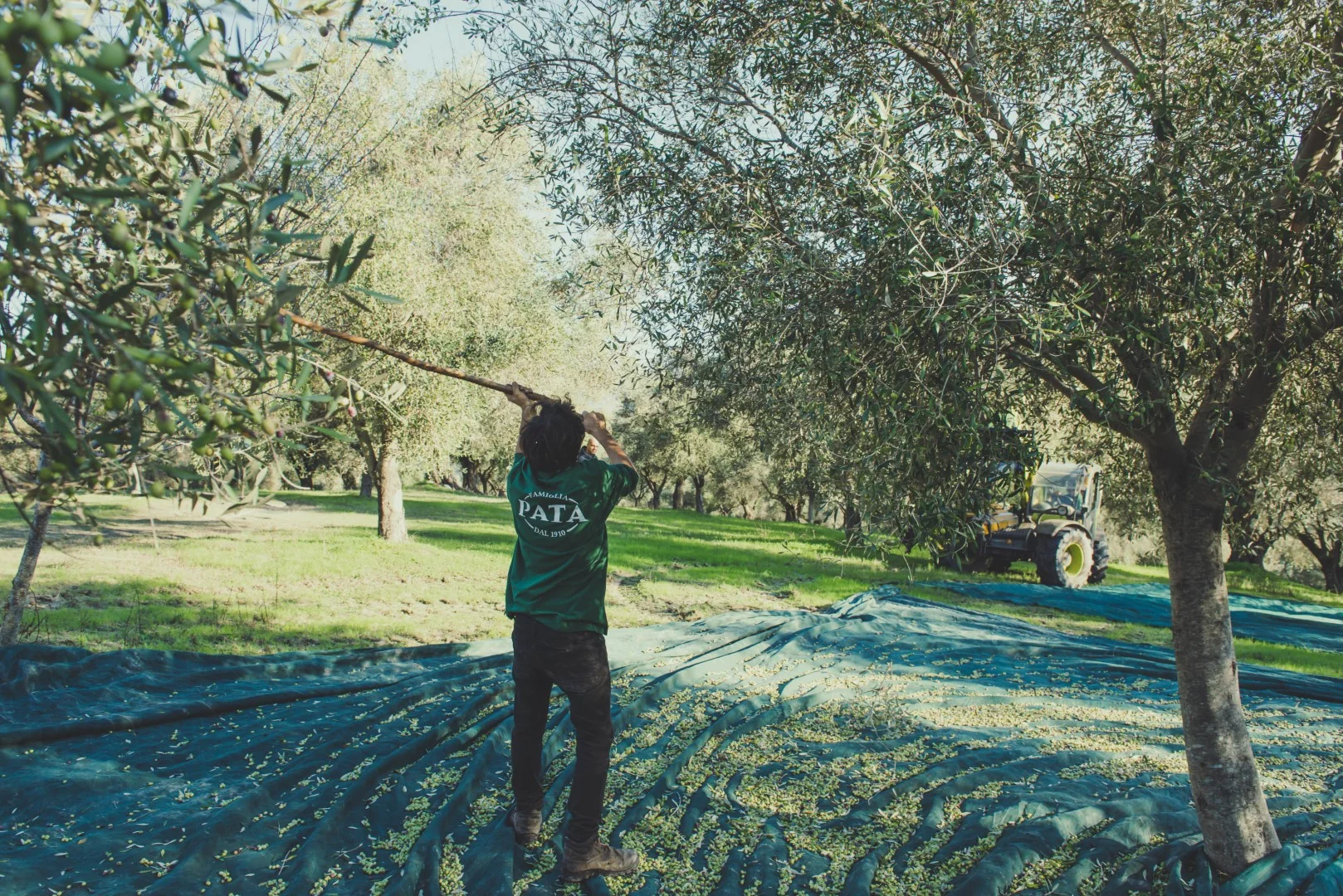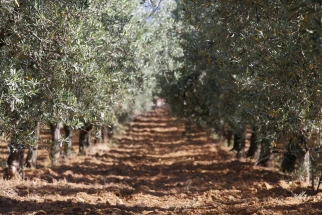
Extra virgin olive oil 102
The Monocultivar
For me, Eric, olive oil was what inspired me to start Mezzogiorno. Once you have tasted high quality extra vierge olive oil (EVOO), you cannot go back. But after a while, you start to realize that the world of olive oil is even more fascinating; Italy alone has over 350 different types of olives, each resulting in a specific taste profile once trasformed into oil. A lot of the olive oils most people know are blended olive oils, but the true essence of the olive can only be experienced in a monocultivar. In this blog, we'll explore and compare the taste profiles of four distinct monocultivar olive oils from Italy: Leccino and Cerasuola and Coratina from Puglia, and Ottobratica from Calabria. But first let's talk about the difference between blended and monocultivar extra virgin olive oils.
Monocultivar EVOO: Celebrating Uniqueness
Monocultivar extra virgin olive oil is produced using olives from a single olive variety, such as Leccino, Cerasuola, Coratina, or Ottobratica. This means that only one type of olive is used in the oil's production. The goal of monocultivar olive oil is to showcase the unique and distinct flavor characteristics of that specific olive variety. It's similar to savoring a single-varietal wine, which allows the grape's essence to shine through. Monocultivar oils are often prized for their authenticity and purity, as they offer a direct and unadulterated representation of a particular olive's taste profile.


Blended EVOO:
Crafting Complexity
Blended extra virgin olive oil, on the other hand, is a carefully crafted mixture of olives from different varieties. Olive producers intentionally blend various olive types to create a harmonious and balanced oil with a complex flavor profile. The goal of blended olive oil is to achieve a balanced, well-rounded taste that combines the strengths of multiple olive varieties. Think of it as creating a symphony of flavors, where each olive contributes its unique notes to the composition. Blended oils often aim for a consistent flavor profile year after year, which can be especially important for large-scale production.

Coratina
Coratina olives are known for their expressive flavor palate, resulting in an oil that is rich, bold, and intense. Coratina olive oil has a deep green hue and a powerful, pungent aroma reminiscent of fresh herbs, green tomatoes, and artichokes. On the palate, it offers a robust, bitter taste with a distinct peppery finish. Coratina is often used as a finishing oil to add depth and complexity to dishes. It can enhance the flavors of roasted vegetables, grilled meats, and hearty pasta dishes, making it a favorite among those who appreciate a more assertive olive oil, as it is one of the strongest in the world. It is also known to be rich in polyphenols, powerful antioxidants, which along with its robust taste yield great health benefits.
Cerasuola
Cerasuola olives, native to Puglia, produce an olive oil with a unique taste profile that sets it apart from other varieties. Cerasuola is also called "the red olive" which is why its name means "cherry" in Italian, referring to the cherry red stage of the olive when ripening on the tree. This oil has a distinct color, a deep, vibrant green. The oil's aroma is intensely fruity and grassy, with a hint of freshly cut herbs. The flavor is equally bold, featuring strong, spicy notes with a noticeable pepperiness. Cerasuola olive oil is perfect for those who enjoy a more robust and assertive flavor in their dishes. Its bold, peppery finish adds a delightful kick to salads, sauces, and grilled meats.
Leccino
Leccino olives are one of the most popular cultivars in Italy and are widely used in Puglia's olive oil production. Leccino olive oil is known for its mild and delicate flavor profile. It has a pale golden color with a subtle fruity aroma, evoking notes of fresh grass and green apples. On the palate, Leccino olive oil offers a harmonious balance of bitterness and pungency. Its taste is characterized by a mild, almond-like sweetness and a hint of artichoke. Leccino olive oil is an excellent choice for those looking for a versatile, well-rounded oil that can complement a variety of dishes.
Ottobratica
Ottobratica olives, native to Calabria, yield a monocultivar olive oil with a unique and captivating flavor profile. The oil has a golden-green hue and a delicate, fruity aroma with hints of fresh grass and green apple. On the palate, Ottobratica olive oil is characterized by a mild bitterness and a slight peppery note, making it more balanced and approachable. Its flavor profile is often described as mellow and well-rounded, making it a versatile choice for various culinary applications. Ottobratica olive oil pairs exceptionally well with lighter dishes, such as salads, seafood, and delicate pastas.
The world of monocultivar olive oils offers a fascinating journey into the diverse flavors and aromas of olive varieties. In this comparison, we've explored the unique taste profiles of Leccino, Cerasuola, and Coratina olive oils from Puglia, and Ottobratica olive oil from Calabria. Each of these oils has its own distinctive characteristics, allowing you to select the perfect one for your culinary creations.
Whether you prefer the mild and versatile Leccino, the bold and peppery Cerasuola, the intense and robust Coratina, or the well-rounded Ottobratica, these Italian monocultivar olive oils bring the taste of the Mediterranean to your table. Experiment with these oils to elevate your cooking and experience the essence of Italy's diverse olive oil traditions.

If you want to learn more about the production of high-quality extra virgin olive oil, then read our other EVOO blog.
Or discover the three different monocultivars of Stefano Caroli, our farmer from Puglia.


.jpg?resolution=1024x340&type=webp&quality=90)
.png?resolution=322x0&quality=90&type=webp&background=FFFFFFFF&force_jpg_crop=1)
.jpg?resolution=322x0&quality=90&type=webp&background=FFFFFFFF&force_jpg_crop=1)
